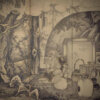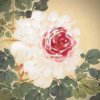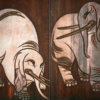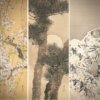Fukuda Suikō: Shijō School Painter Who Takes the Nickname of “Hawk’s Suikō”
White Egrets
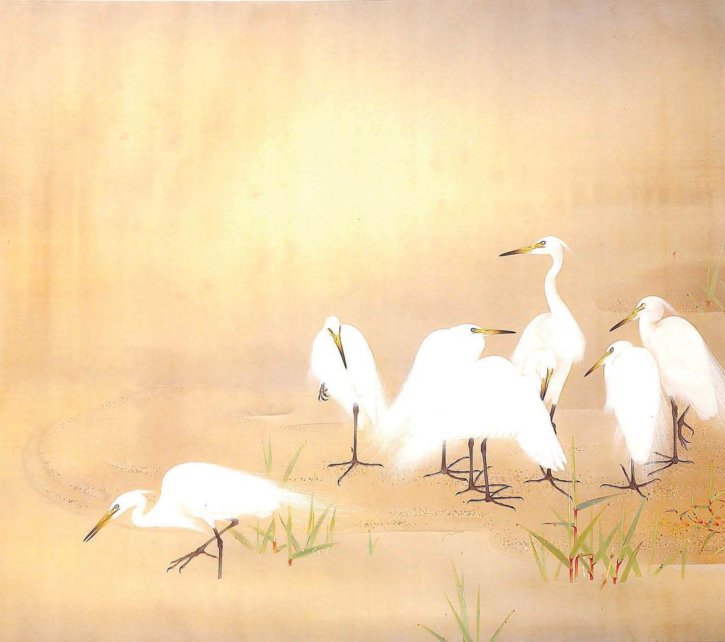
Fukuda Suikō was born in Kyōto in 1895. After graduating from the Kyōto Municipal School of Arts and Crafts in 1913, he worked in the art department of Takashimaya but became determined to be a painter. Suiko’s career as a painter began in earnest in 1925, when he joined “Shōkōsha,” a painting school of Nishiyama Suishō. In 1926, his painting “The Hawk” was selected for the 7th Teiten exhibition. In 1931, he was awarded a special prize at the Teiten, and in 1932, he became without inspection, and Suikō’s prewar presentation activities were centered around the Teiten exhibition, Nitten exhibition, and Shōkōsha exhibition. After the war, he continued to exhibit his works at the Nitten exhibition, and at the same time, he continued to produce works vigorously and held many solo exhibitions.
After the death of his master Nishiyama Suishō in 1958, he studied under Tokuoka Shinsen, which was a significant step in the development of Suikō’s painting career. After that, Suikō’s works became more poetic. In 1961, he became a member of the judge of the Nitten exhibition and established a solid position in the art world, which was probably the peak of Suikō’s artistic activities. Around 1965, at the age of seventy, he began to experience physical problems, and in 1972 he developed heart and kidney disease. He died unfortunately in 1973 due to heart failure.
Suikō inherited the tradition of the Shijō School from Takeuchi Seihō to Nishiyama Suishō and seems to have pursued a rigorous approach to realism. In order to achieve realistic expression, the first priority was to master the technique, and it can be said that Suikō mastered this technique enough. Suikō’s works sometimes give the impression of craftsmanship, it may be due to the brilliance of his technique. The expression of the egrets in this work is also without fail, and we feel the rigor of not neglecting even a single line. The painting must have been based on many sketches.
Hawk and Falcon
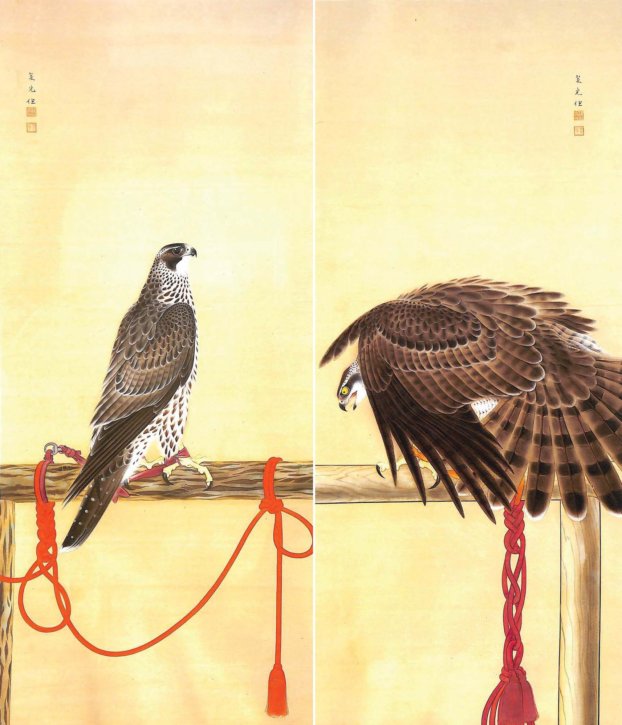
Fukuda Suikō was known as “Hawk’s Suikō.” His first work to be selected for the Teiten was a hawk, and the work that won a special prize at the Teiten was also a painting of a hawk. If the 1931 exhibition was his first solo exhibition, Suikō‘s solo exhibitions began with ten falcon paintings and ended with the exhibition of ten falcon paintings in 1967. Suikō continued to paint falcons from his early days as a painter to his later years. Thus, the hawk was a memorable theme for Suikō and was a theme he liked. Suikō wrote himself that he was attracted to the falcon because of its “dignified, majestic, and graceful” appearance, and despite the changes in his painting style after studying under Tokuoka Shinsen, his perception of the falcon did not seem to change much. This may be because the poetic sentiment of the paintings, which became more outstanding after his style changed, was not appropriate for expression of this falcon.
This work depicts a falconry hawk. The right side of the painting is a goshawk and the left side is a falcon, both of which have been used for falconry since ancient times. This work was exhibited at the first Shin-Bunten exhibition in 1962.
White Geese
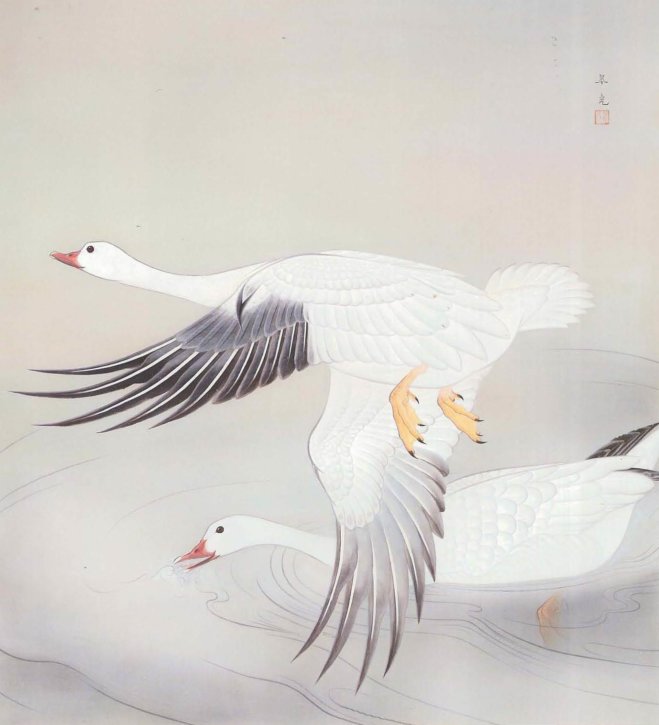
“White Goose” is a work that focuses on realism, the tradition of the Shijō School, from Takeuchi Seihō to Nishiyama Suishō. Each feather is carefully drawn, and the screen with suppressed colors is clean, showing the earnest painting style of Suikō. Although the painting depicts white geese in flight, a sense of tranquility pervades the entire work, and only the slight surface of the water, which the beak of the swimming white goose probes, causes a stir, further reinforcing the overall tranquility.
Snow White Swan
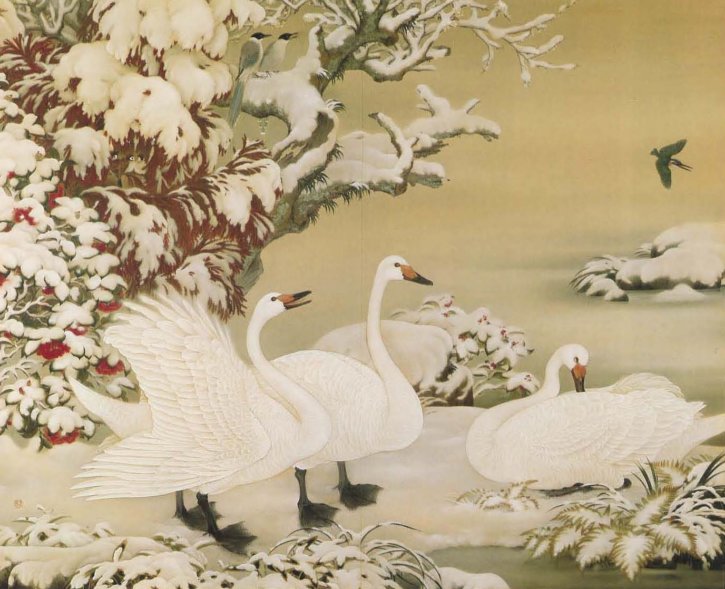
In the same way that Kishi Chikudō of the Kishi School, a prominent figure in the Kyōto art world and one of the great masters of the Meiji era, resembled a tiger, Fukuda Suikō, also known as “Hawk’s Suikō,” is said to have had an appearance reminiscent of a hawk. After the death of his master Nishiyama Suishō, he studied under Tokuoka Shinsen and began to move away from his traditional focus on realism towards a more inner world of paintings. However, in the summer of 1965, he began to suffer from high blood pressure, which made it difficult for him to make progress in his work. So, he has not exhibited his works at the Nitten exhibition after 1970 due to his health issues. After that, his condition worsened, and he died in 1973. He was 77 years old at the time.
“Snow White Swan” has a fairytale-like romantic lyricism and symbolizes the early realism of Suikō, which makes us feel a tranquil elegance. This work was exhibited at the 9th Teiten exhibition in 1928 at the age of 33.
The Japanese art world in Kyōto has a tradition of excellent sketching of nature in the four seasons since the Maruyama and Shijō schools of the Edo period, and in this painting, with the theme of swans, from kingfisher, long-tailed bird, sparrow bird to snow on the old plum tree, cedar, camellia, Aucuba japonica, bear bamboo grass, lepisorus thunbergii, and fern, the detailed and defined brushstroke of Suikō’s sketch is active. In his brushwork and coloring, the spirit of traditional Oriental flower-and-bird paintings is alive through Suikō ‘s emotions. It seems that his talent for shape and composition is not the only gifted that circulates the viewer’s glances and draws them into the painting.

